Abstract
1. Ergothioneine has been detected and quantitatively estimated in the brains of mice, rats, guinea-pigs, rabbits, cats and sheep. It is present in the cerebellum in amounts ranging from about 3·0 μg/g in the cat to 10 μg/g in the guinea-pig. Amounts in the cerebral hemispheres are much smaller, ranging from < 0·1 μg/g in the cat to 1·6 μg/g in the guinea-pig.
2. Large amounts of ergothioneine (about 30 μg/g) were found in the optic nerves of the rabbit. None was detected in the dorsal columns of the spinal cord of the same species.
3. Ergothioneine has an excitatory action on the electrical activity of the cerebellum of the decerebrate rabbit and the excitatory actions of cerebellar extracts on this preparation are completely accounted for by their contained ergothioneine.
4. It is concluded that the cerebellar factor of Crossland & Mitchell (1956) is identical with ergothioneine.
Full text
PDF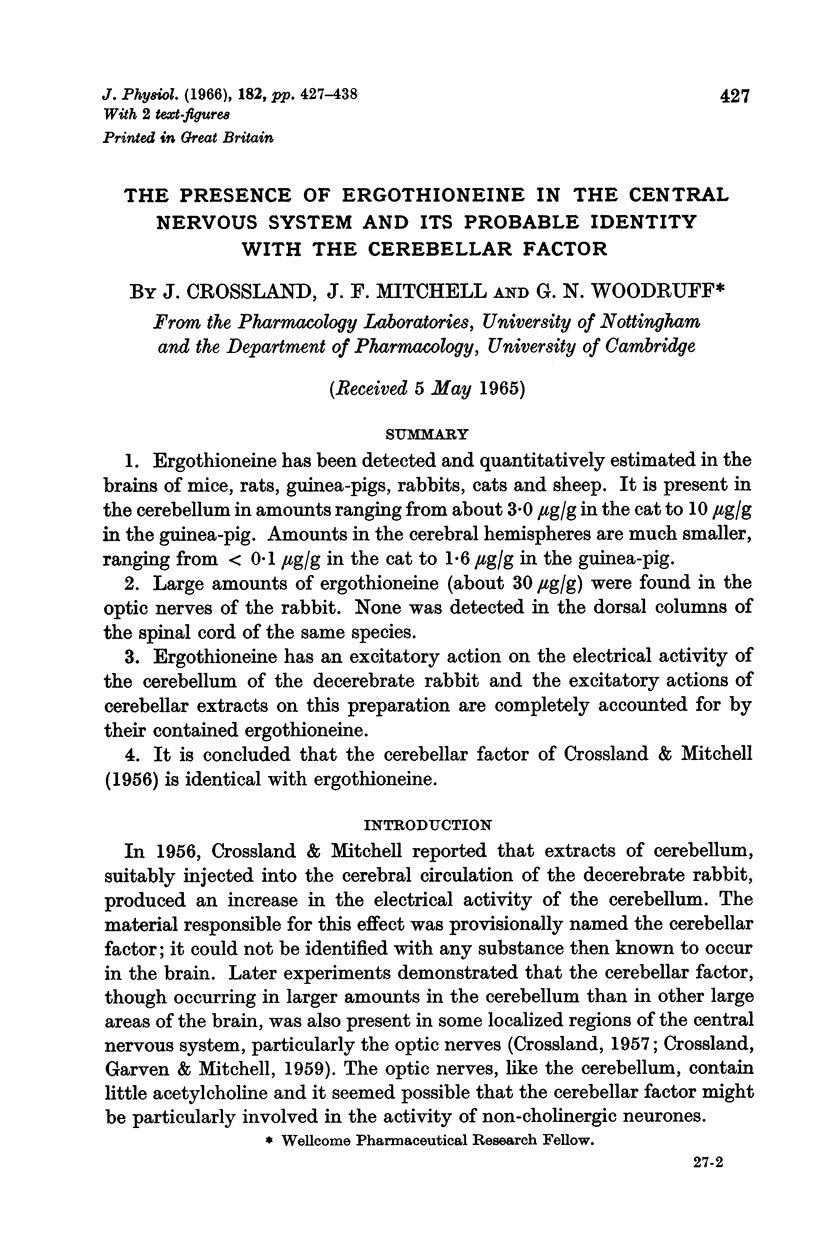
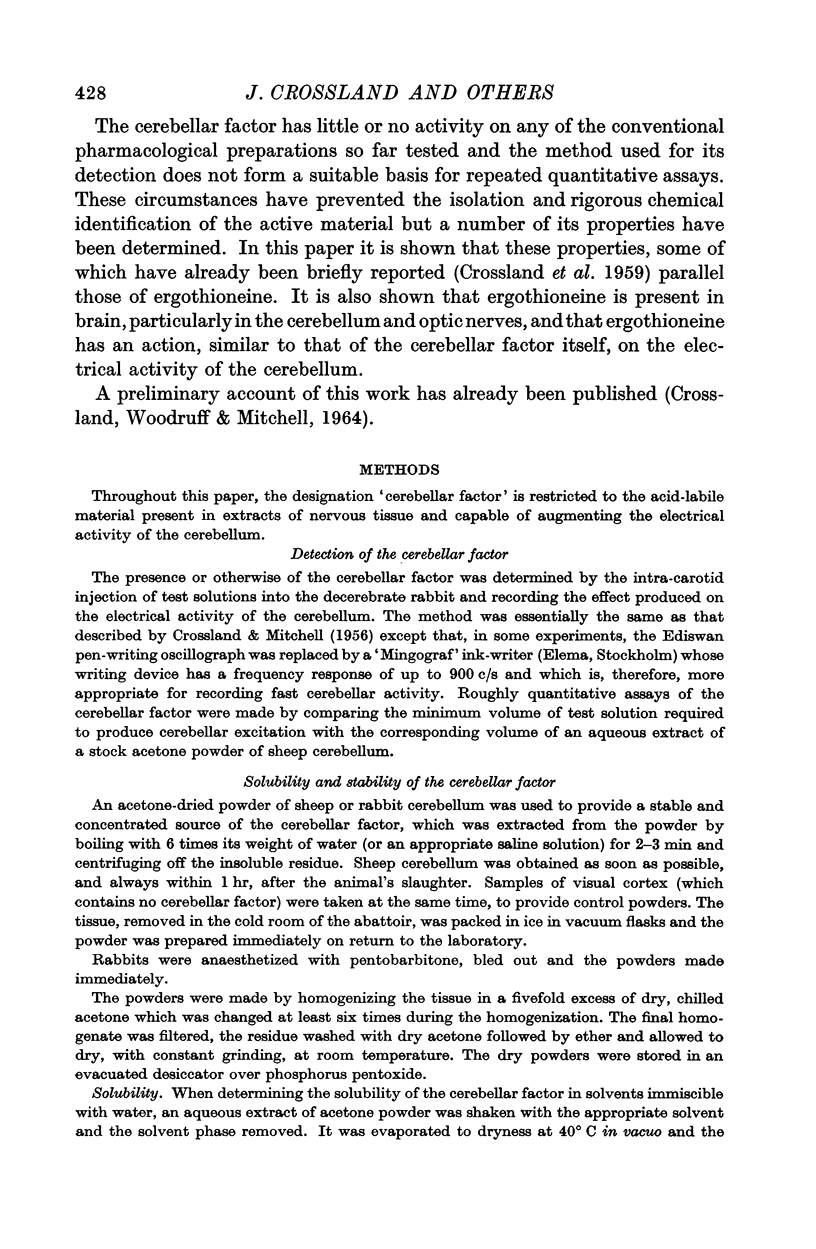
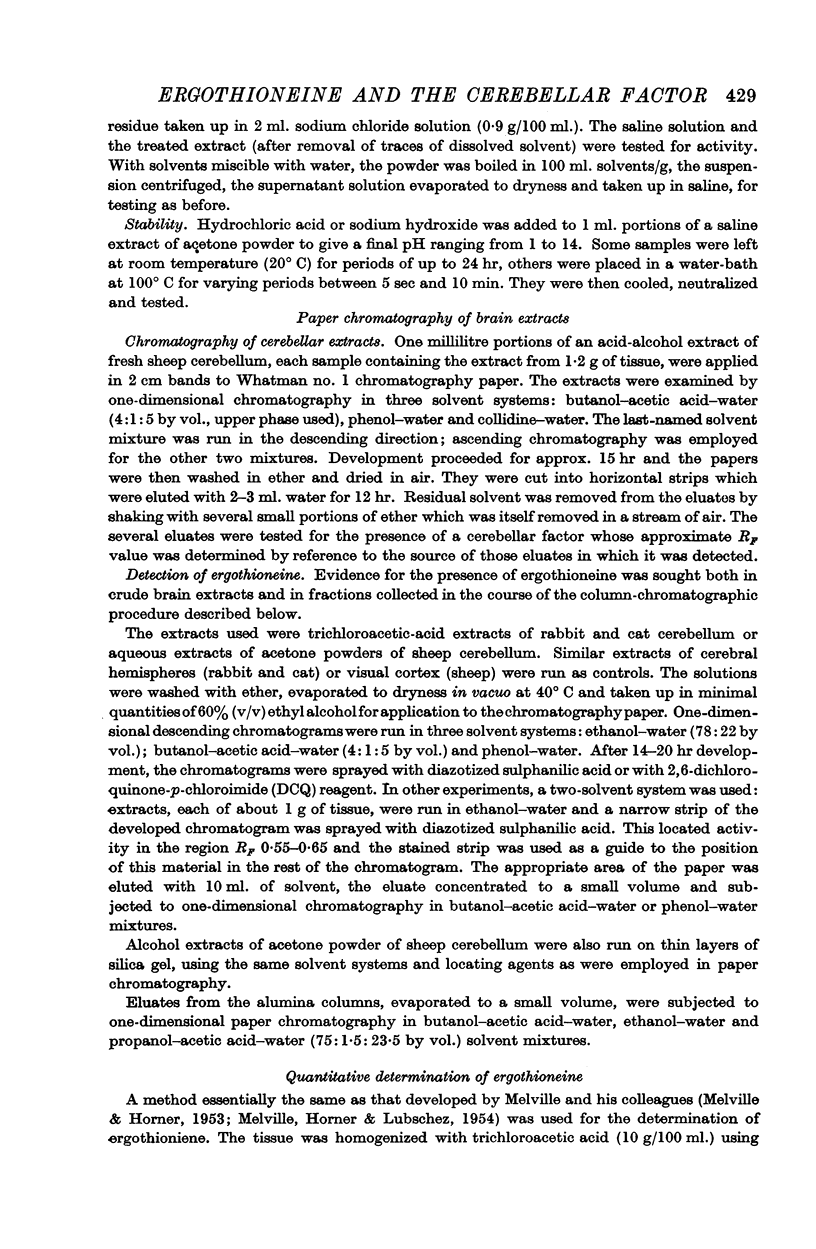
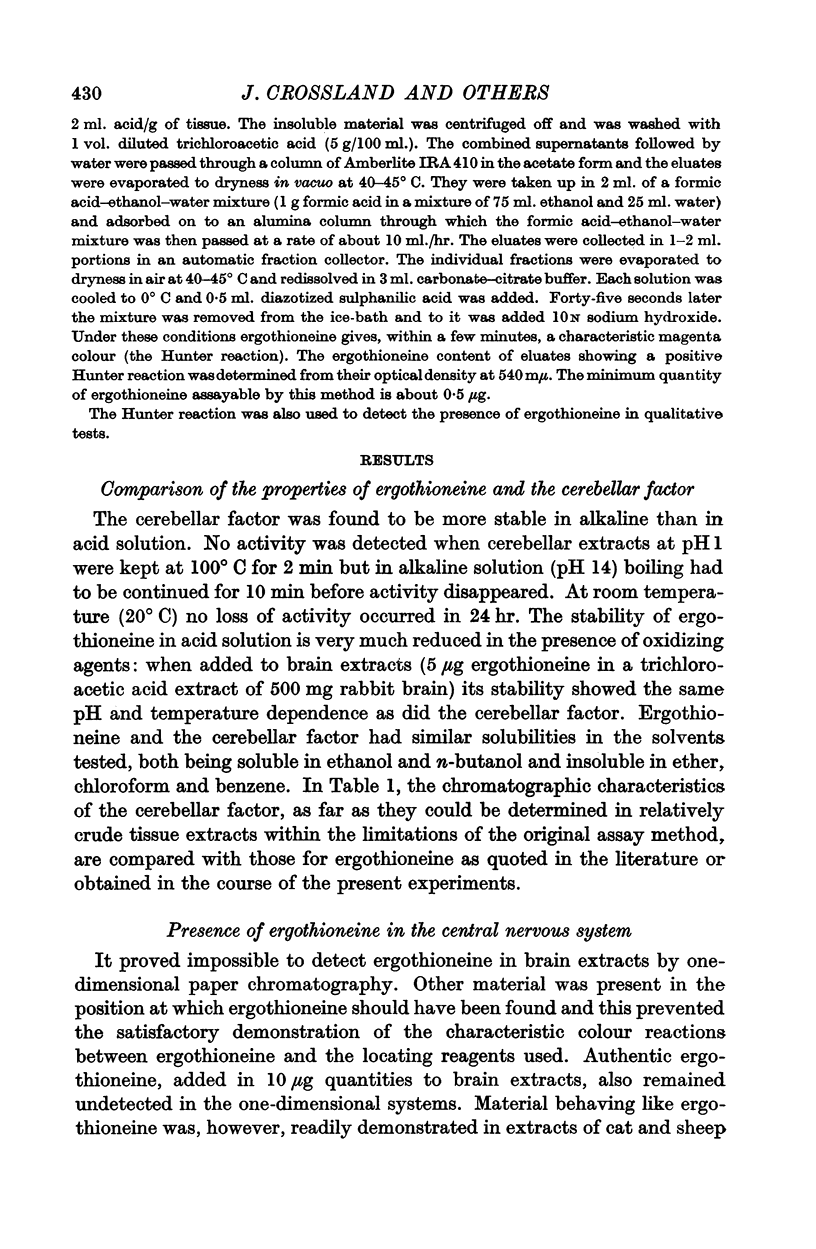
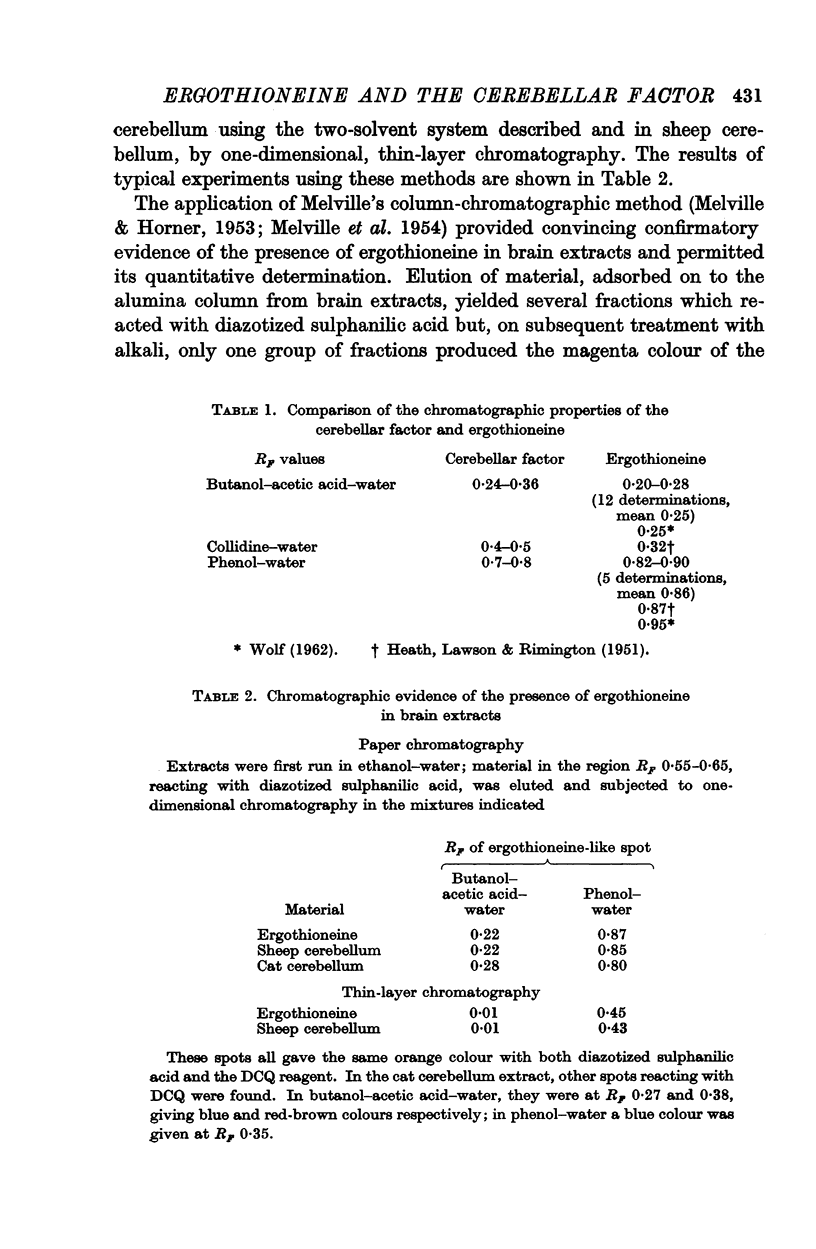
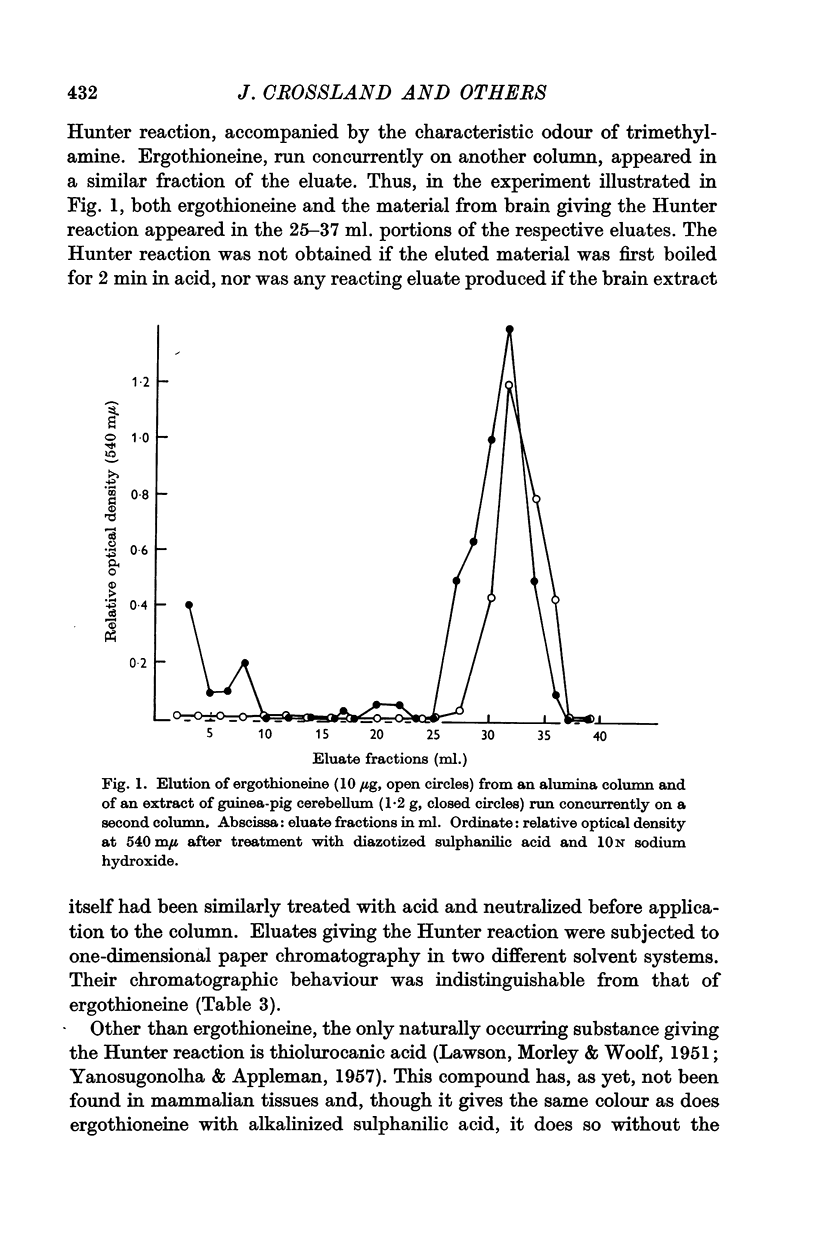


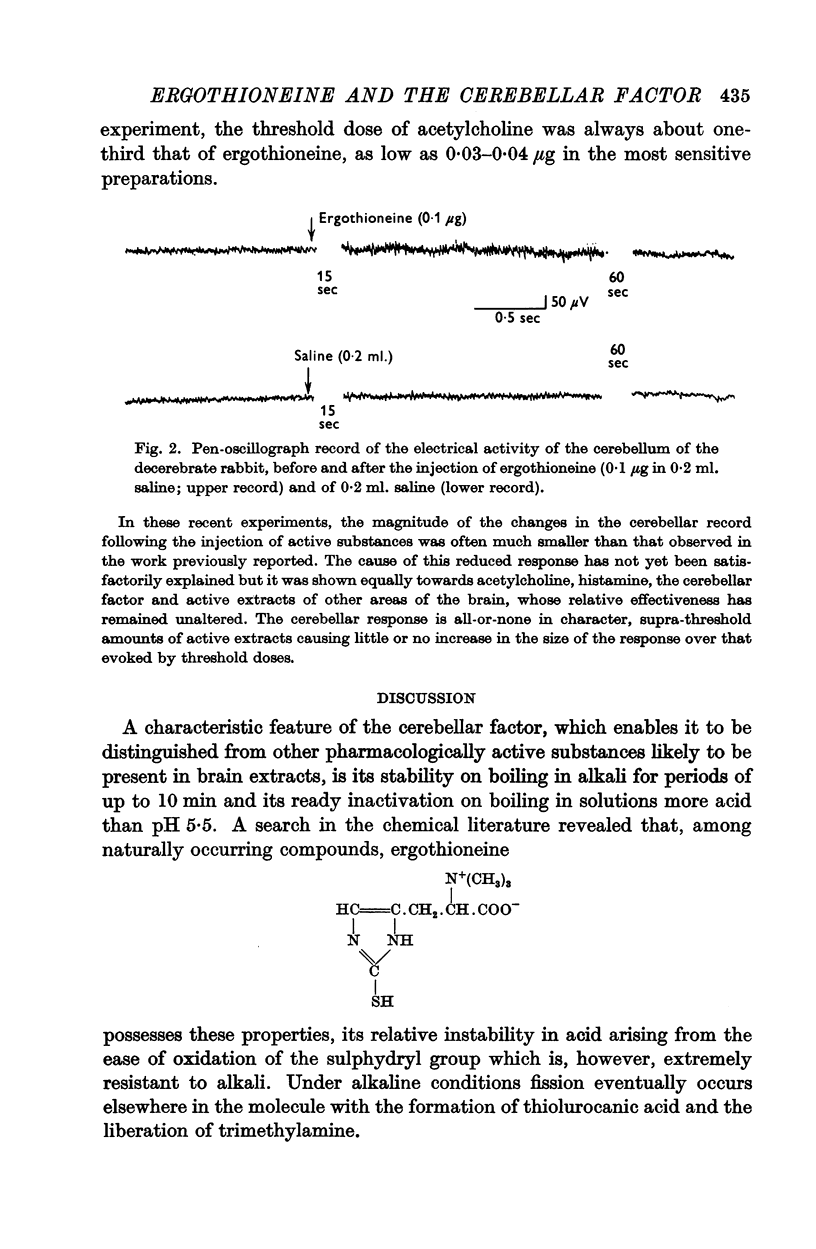
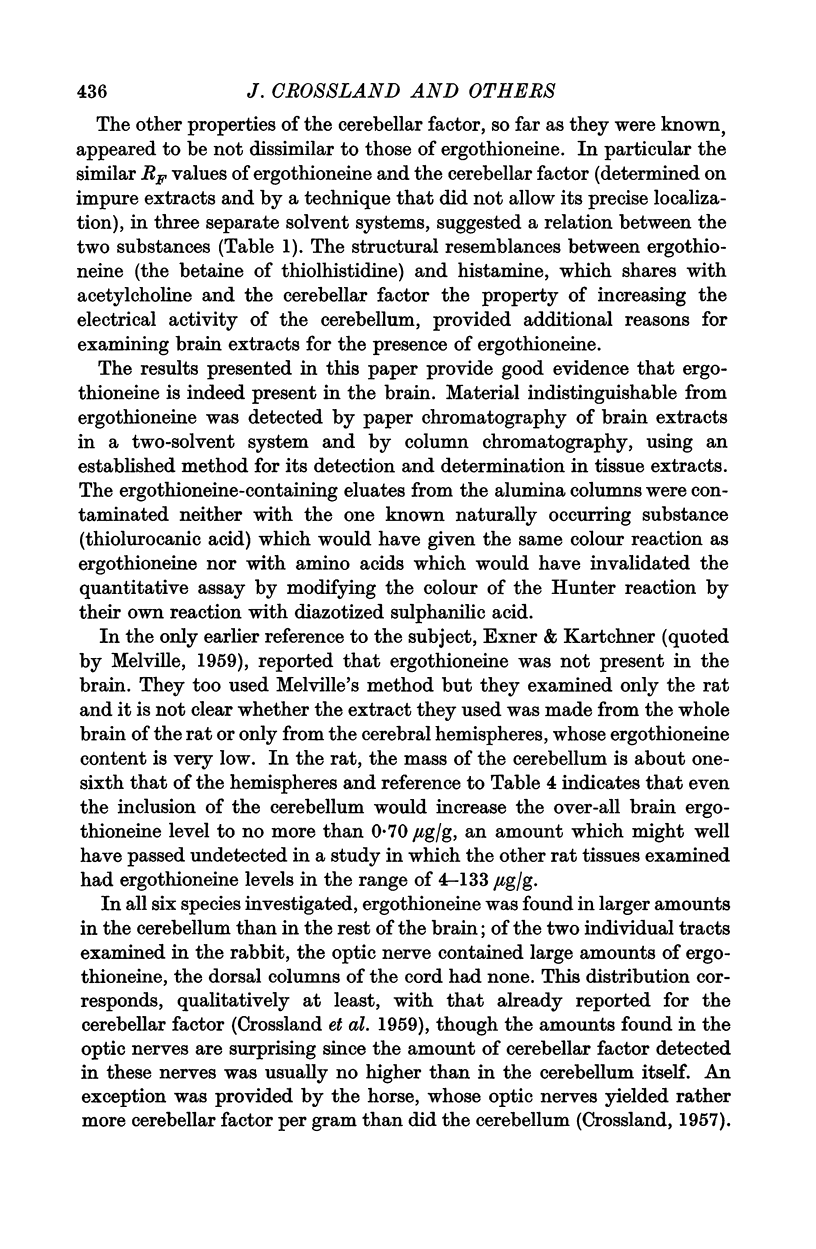
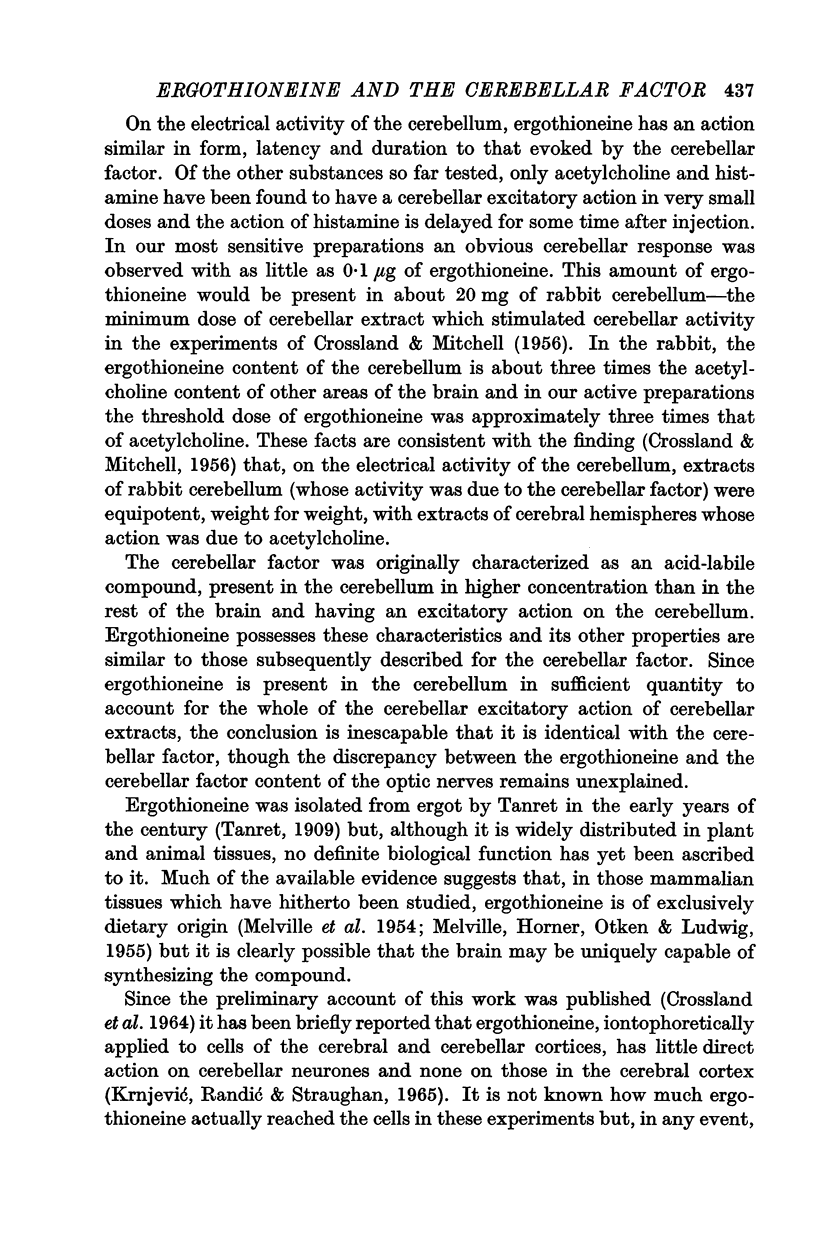
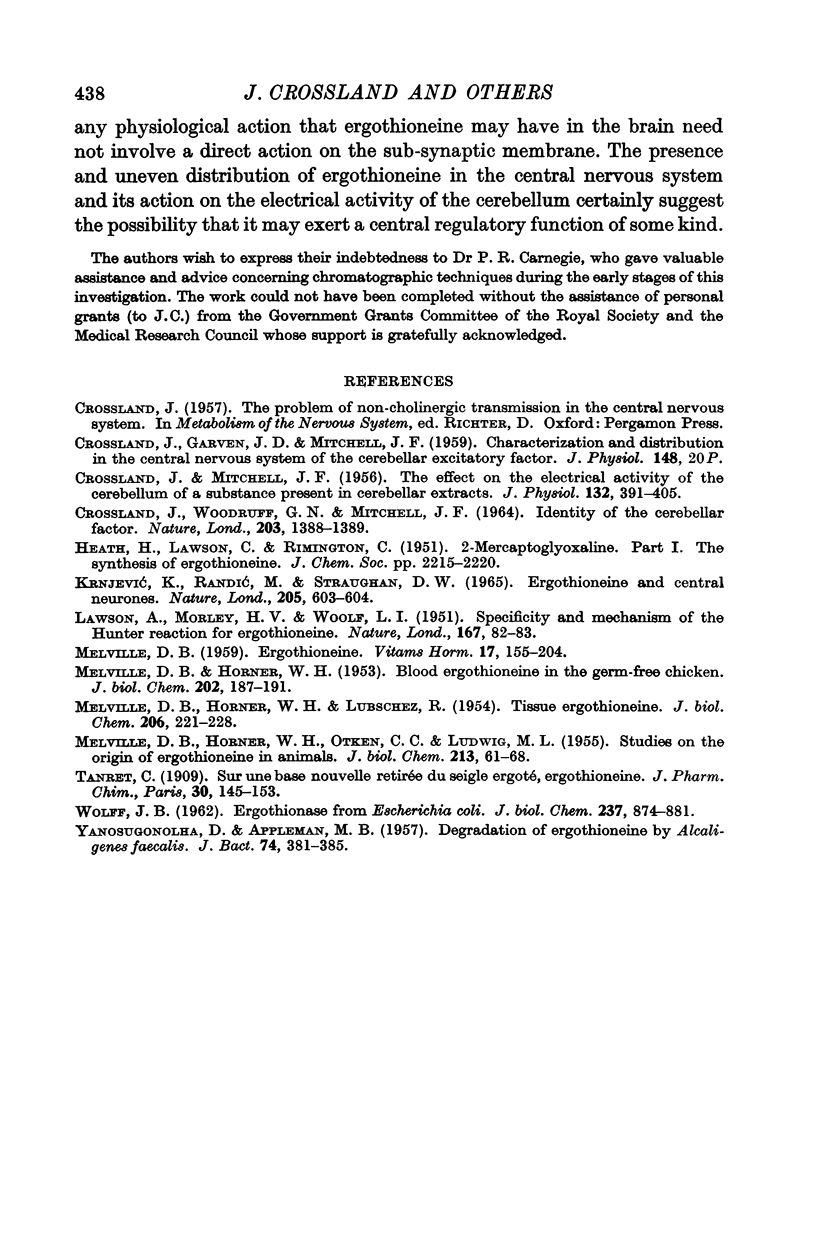
Selected References
These references are in PubMed. This may not be the complete list of references from this article.
- CROSSLAND J., MITCHELL J. F. The effect on the electrical activity of the cerebellum of a substance present in cerebellar extracts. J Physiol. 1956 May 28;132(2):391–405. doi: 10.1113/jphysiol.1956.sp005533. [DOI] [PMC free article] [PubMed] [Google Scholar]
- CROSSLAND J., WOODRUFF G. N., MITCHELL J. F. IDENTITY OF THE CEREBELLAR FACTOR. Nature. 1964 Sep 26;203:1388–1389. doi: 10.1038/2031388a0. [DOI] [PubMed] [Google Scholar]
- KRNJEVIC K., RANDIC M., STRAUGHAN D. W. ERGOYHIONEINE AND CENTRAL NEURONES. Nature. 1965 Feb 6;205:603–604. doi: 10.1038/205603a0. [DOI] [PubMed] [Google Scholar]
- LAWSON A., MORLEY H. V., WOOLF L. I. Specificity and mechanism of the Hunter reaction for ergothioneine. Nature. 1951 Jan 13;167(4237):82–83. doi: 10.1038/167082a0. [DOI] [PubMed] [Google Scholar]
- MELVILLE D. B., HORNER W. H. Blood ergothioneine in the germ-free chicken. J Biol Chem. 1953 May;202(1):187–191. [PubMed] [Google Scholar]
- MELVILLE D. B., HORNER W. H., LUBSCHEZ R. Tissue ergothioneine. J Biol Chem. 1954 Jan;206(1):221–228. [PubMed] [Google Scholar]
- MELVILLE D. B., HORNER W. H., OTKEN C. C., LUDWIG M. L. Studies on the origin of ergothioneine in animals. J Biol Chem. 1955 Mar;213(1):61–68. [PubMed] [Google Scholar]
- WOLFF J. B. Ergothionase from Escherichia coli. J Biol Chem. 1962 Mar;237:874–881. [PubMed] [Google Scholar]
- YANASUGONDHA D., APPLEMAN M. D. Degradation of ergothioneine by Alcaligenes faecalis. J Bacteriol. 1957 Sep;74(3):381–385. doi: 10.1128/jb.74.3.381-385.1957. [DOI] [PMC free article] [PubMed] [Google Scholar]


